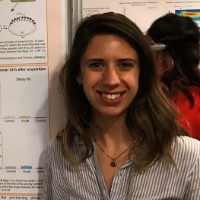The computational process for differentiating similar input patterns has been called pattern separation. In rodents, pattern separation depends on Brain-Derived Neurotrophic Factor (BDNF) and adult neurogenesis in the dentate gyrus. It is also known that acute exercise increases BDNF in both rodents and humans. Recently, we have developed an immersive task in which we could test the effect of acute exercise on spatial pattern separation. In this work, we developed a task to evaluate object pattern separation in humans, which allows parametric manipulation of memory similarity. Therefore, we can manipulate the load on pattern separation processes. In addition, we assessed the effect of acute exercise on this task. Our results showed that participants who were tested immediately after training (short-term group) were able to solve the task both in the recognition images and in those in which it was required to separate patterns. Participants who were evaluated 24 hours later (long-term memory, control group), showed a significant decrease in their memory retention. However, participants who cycled for 25 minutes and were tested 24 hours later (long-term memory, acute group), significantly improved their performance compared to the control group in both object recognition and pattern separation, and reached similar rates to those of the short-term group. In summary, we have implemented a simple non-invasive manipulation that generates significant improvements in human cognition.
P#121
Acute physical exercise improves long-term recognition memory
Daniela Ramirez Butavand
- CABA,
- Argentina
- Daniela Ramirez Butavand ¹
- , Magdalena Miranda ¹
- , Fabricio Ballarini ²
- , Pedro Bekinschtein ¹
- 1 Laboratorio de Memoria y Cognición Molecular, Instituto de Neurociencias Cognitivas y Traslacionales, Universidad Favaloro-INECO-CONICET
- 2 Instituto de Biología Celular y Neurociencias, Facultad de Medicina, UBA-CONICET, Buenos Aires, Argentina
- 3 Departamentos de Ciencias de la Vida, ITBA

